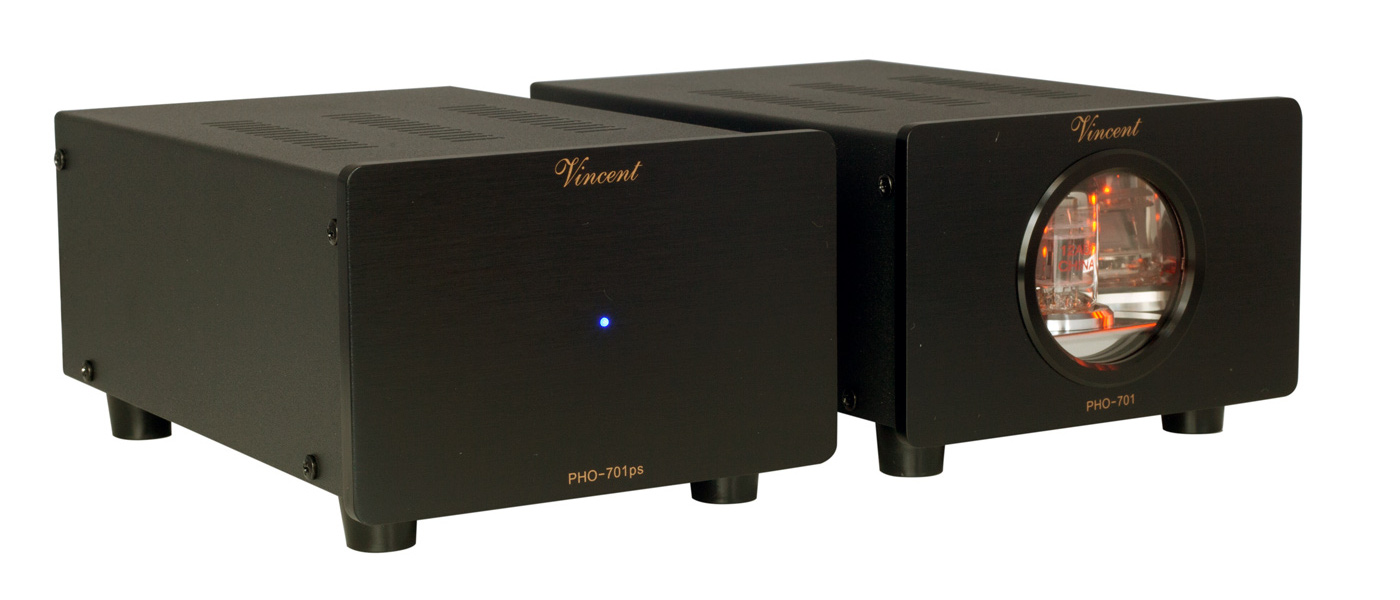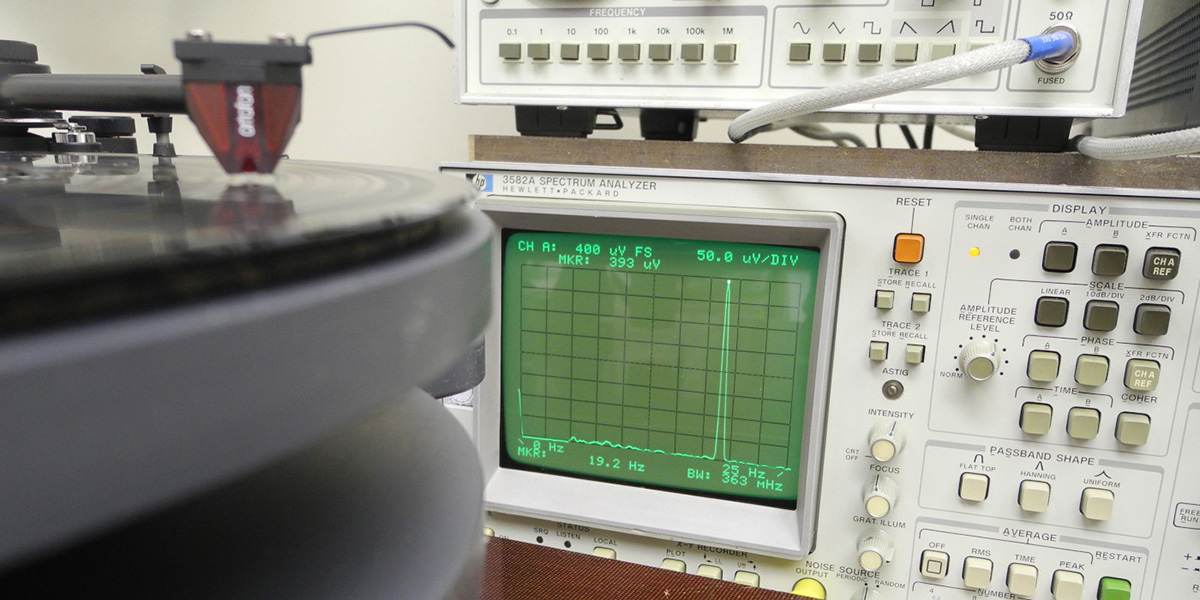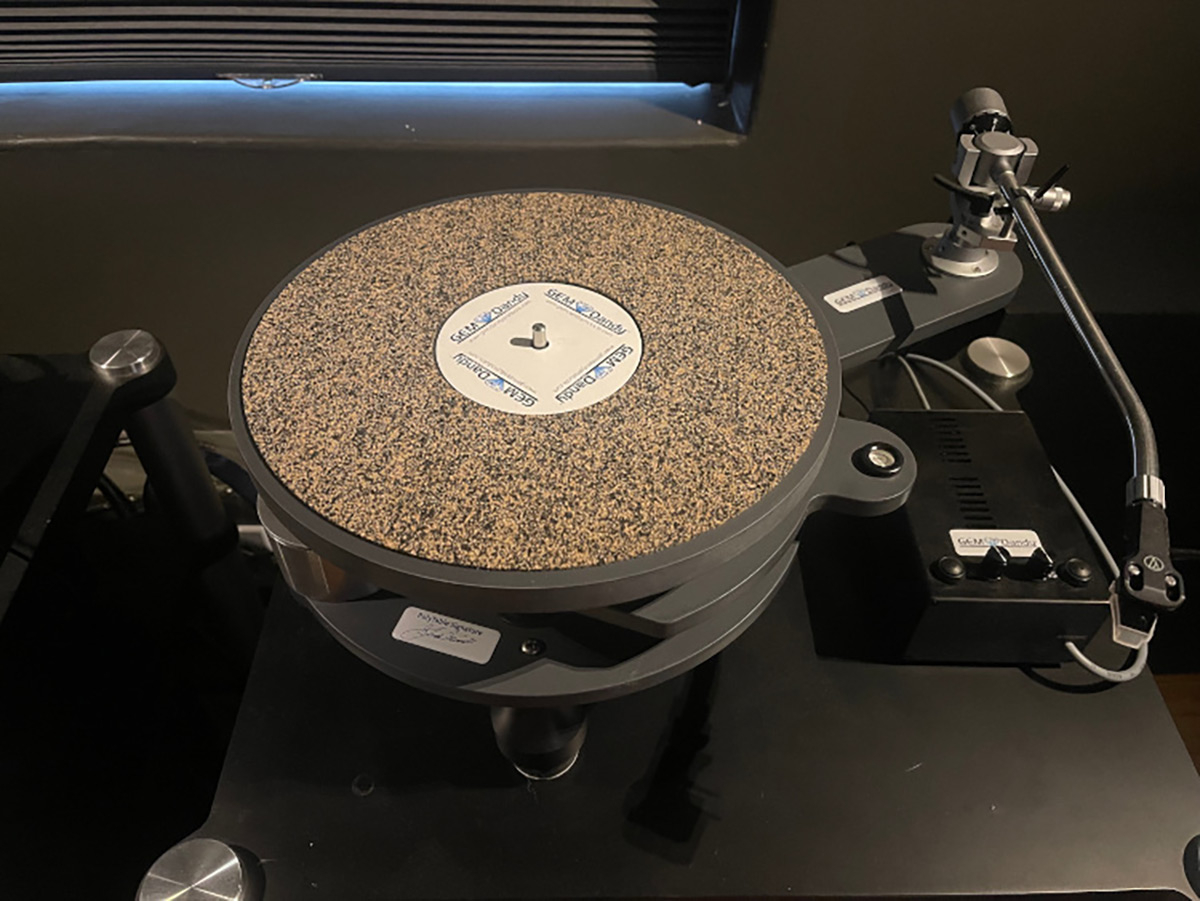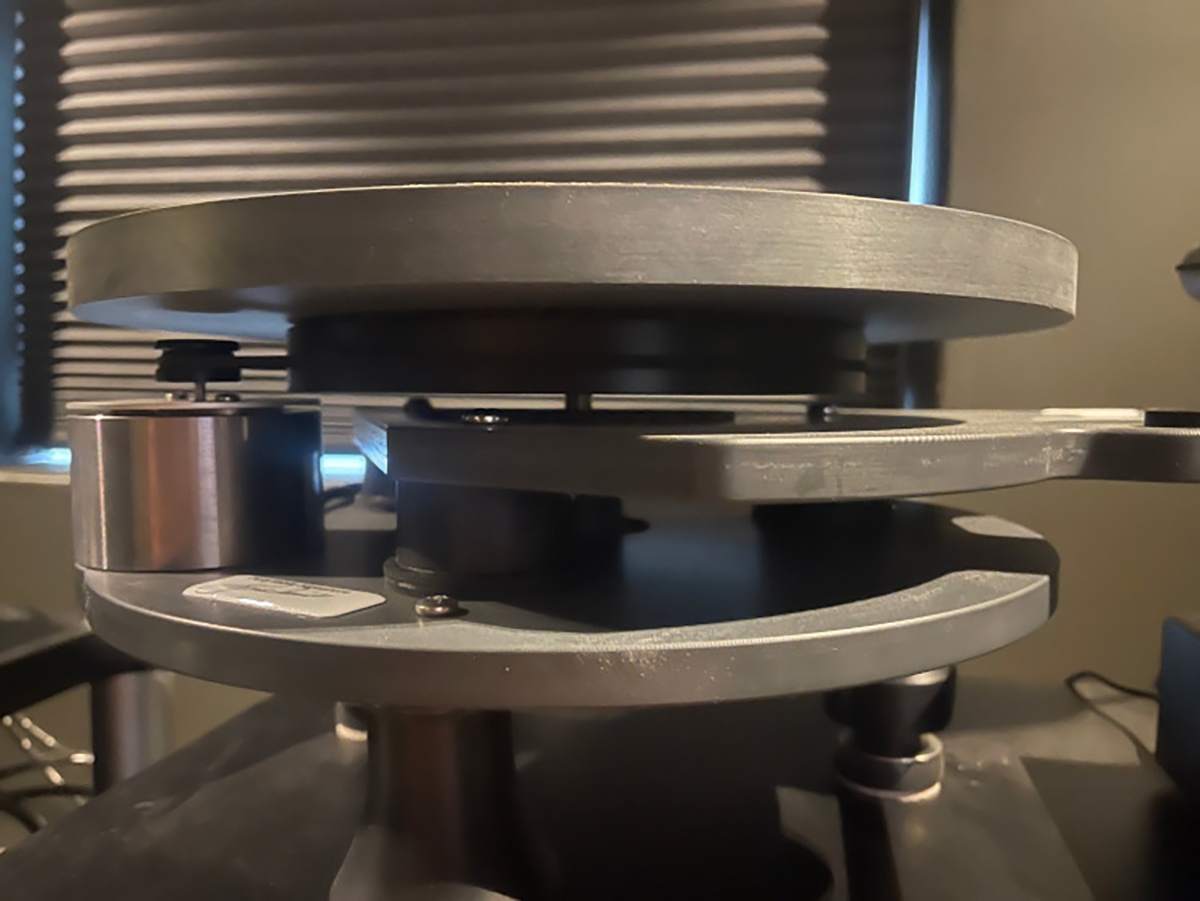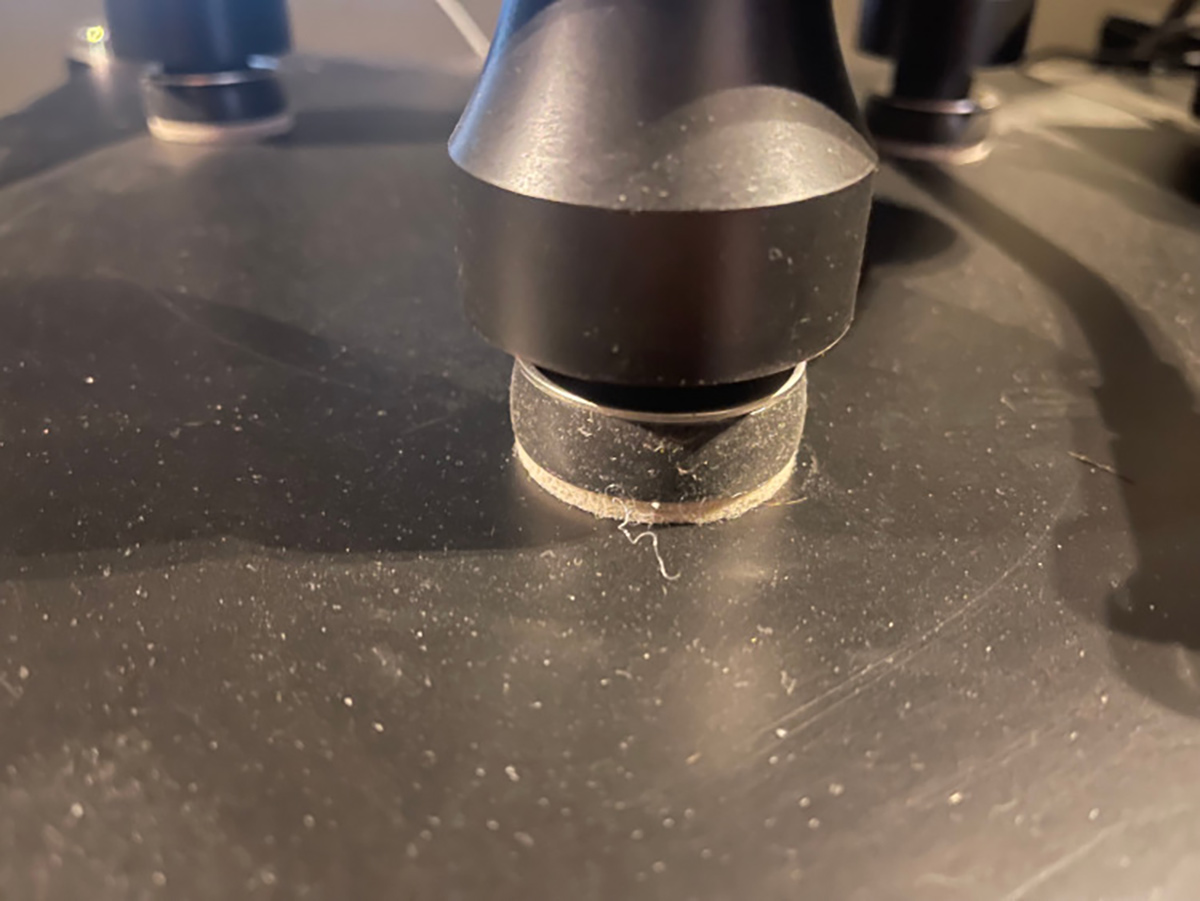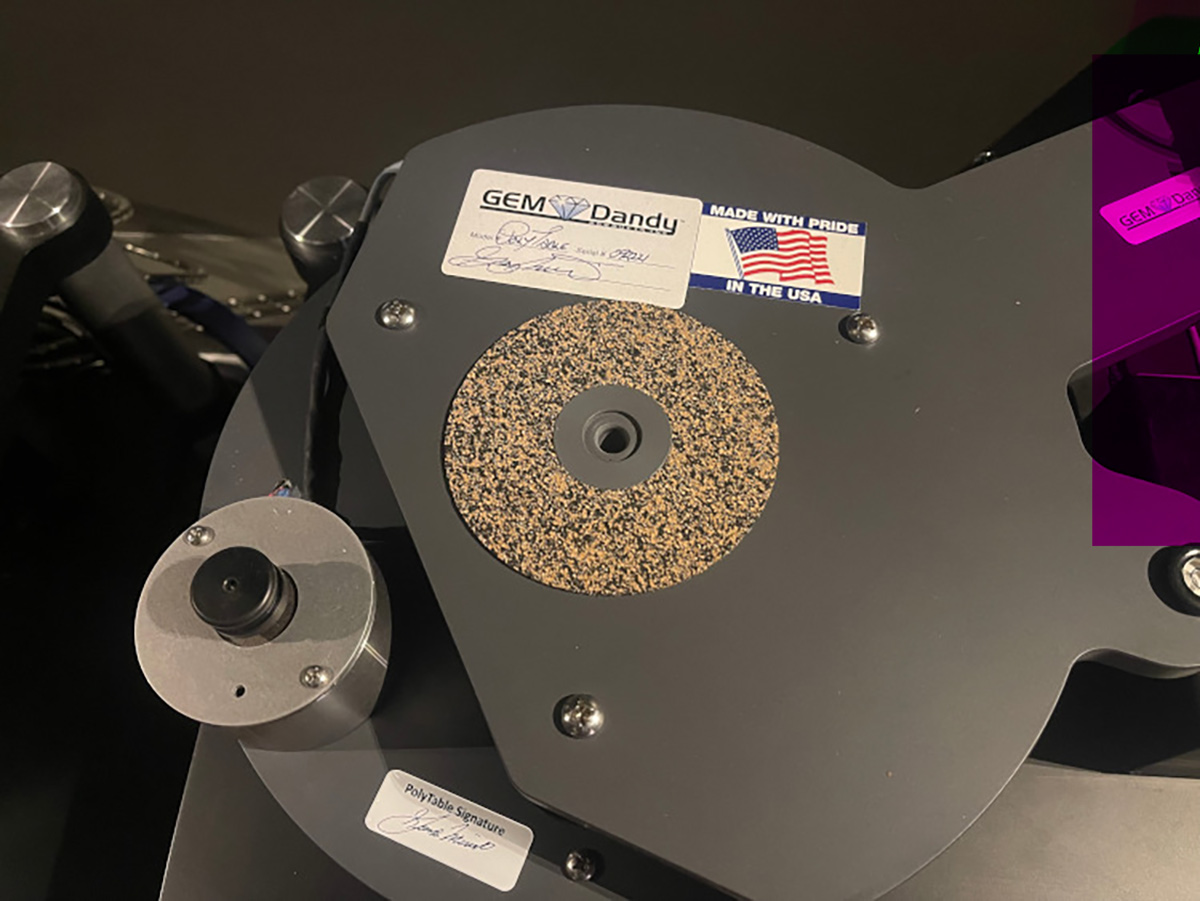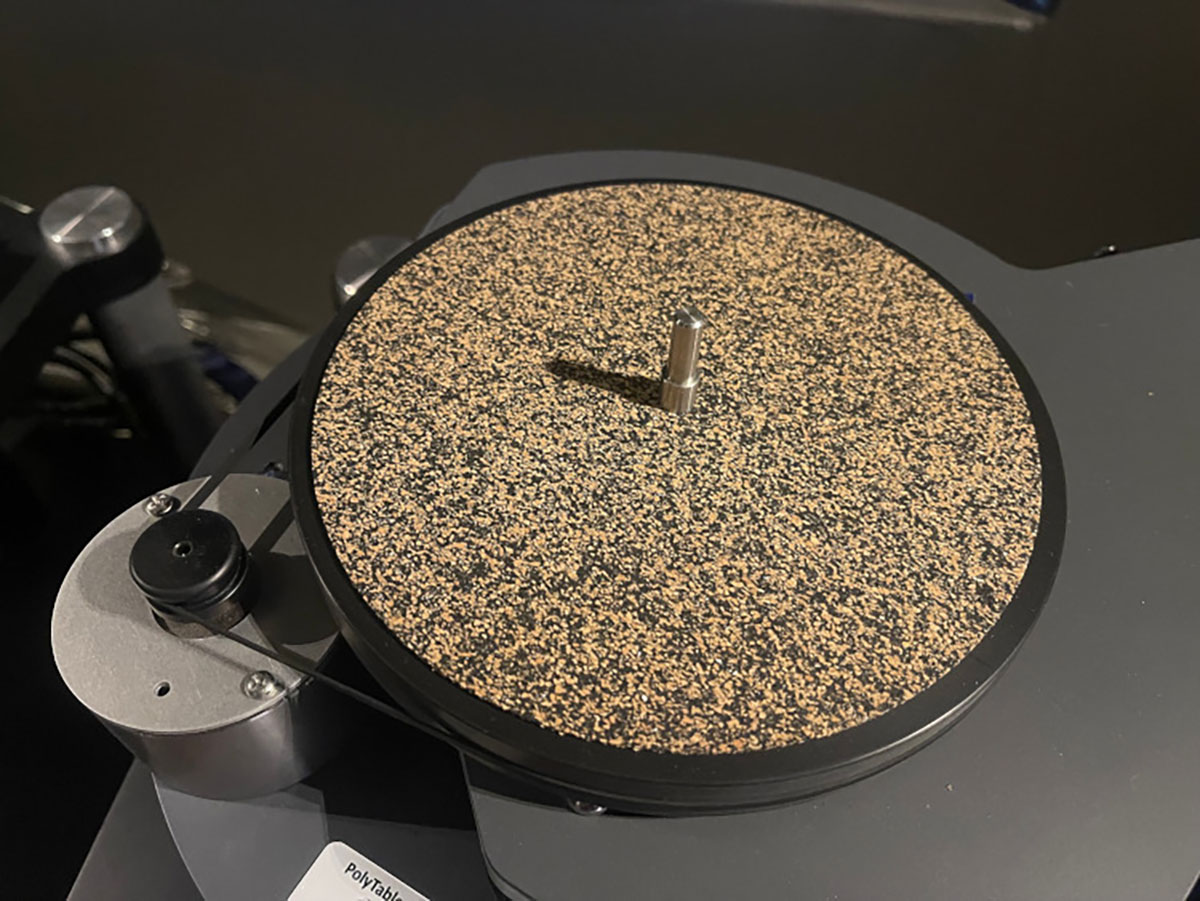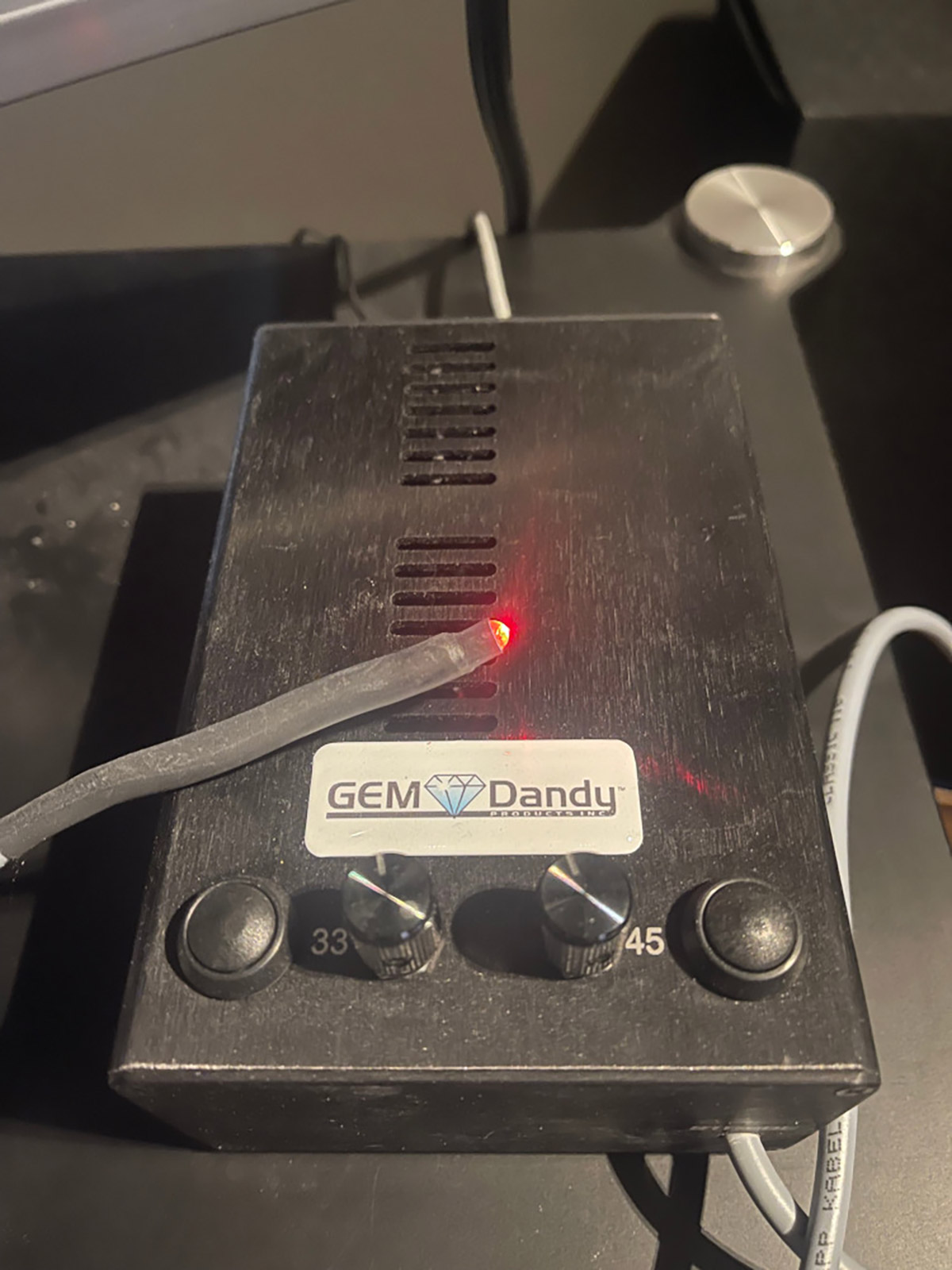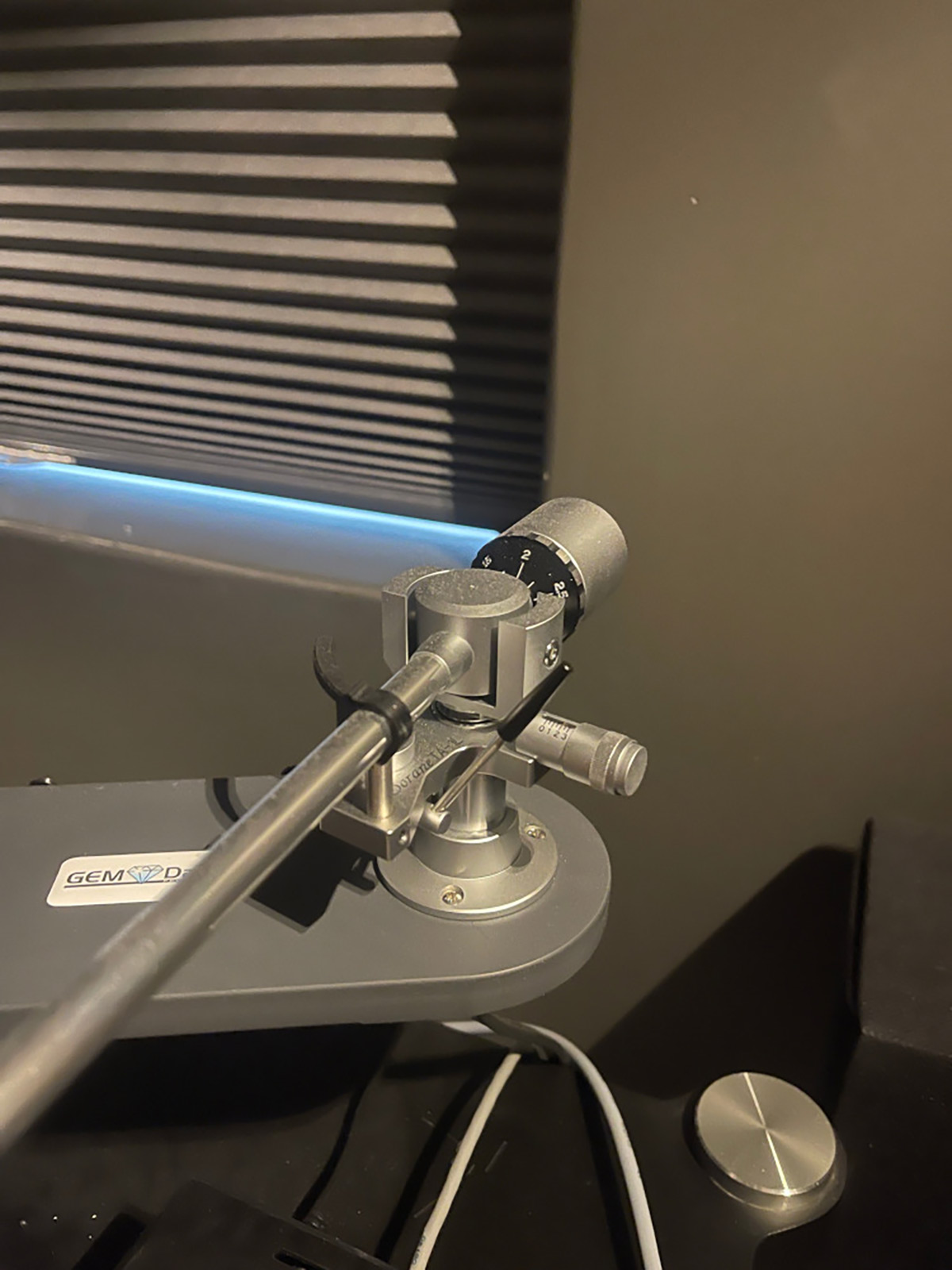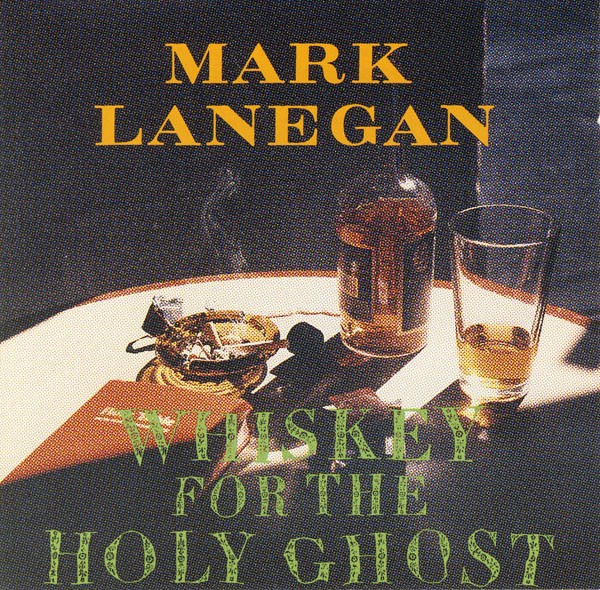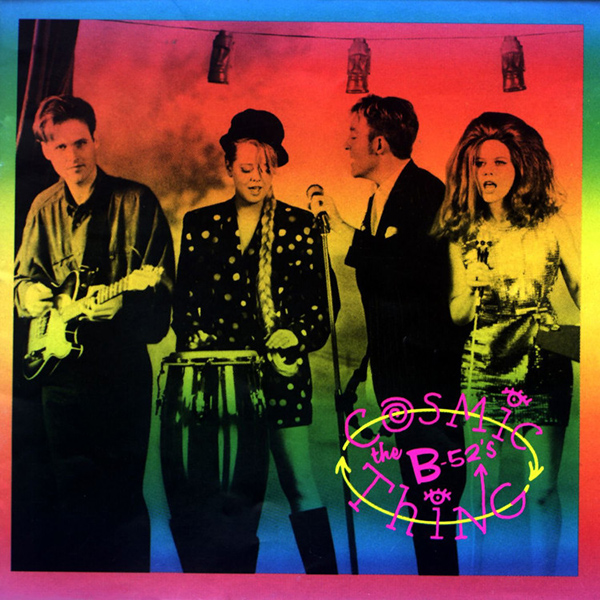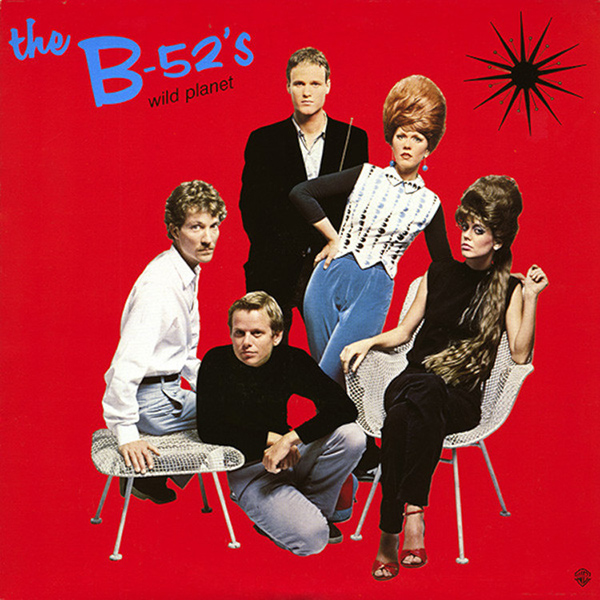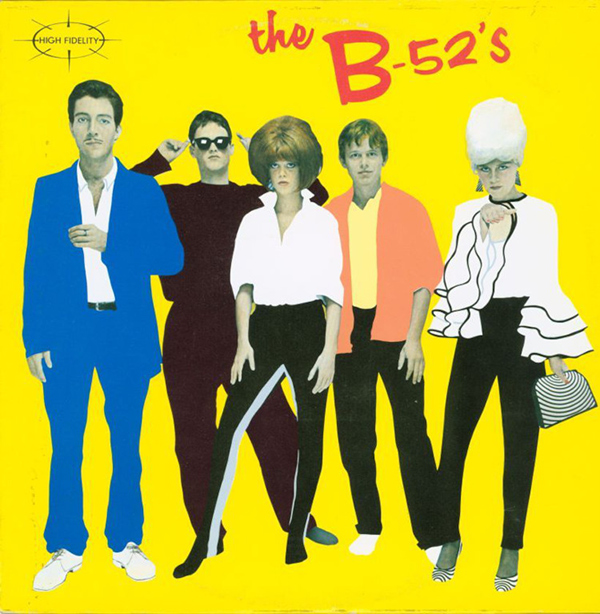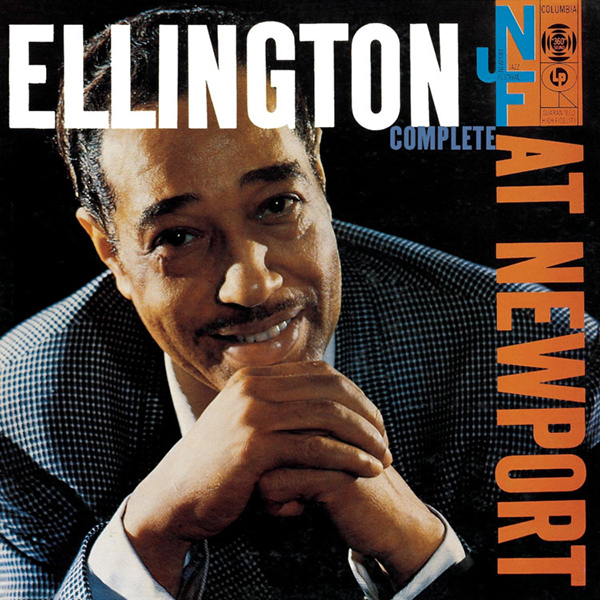He’s been designing turntables for decades. The Polytable Signature is the latest, greatest design from his company GEM Dandy that is designed to provide maximum sonic performance without any unnecessary frippery. Paired with the 12.7” long Sorane TA-1L tonearm, the Polytable signature is one of the best bangs for the buck in analog audio.
The Polytable Signature was a revelation for me. The improvement in sound quality in every facet of performance was truly stunning. There’s not a single drawback I can point at. For the very reasonable price that both the Polytable Signature and the Sorane TA-1L go for, I can’t quite understand why you’d want to spend more. As long as you care more about how your turntable sounds rather than how it looks and what brand name it has on it.
GEM Dandy Polytable Signature Turntable and Sorane TA-1L Tonearm
- Superb sound quality everywhere, all the time
- Clever, simple design with everything you need and nothing you don’t
- Can accommodate virtually any tonearm including the 12.7” long Sorane TA-1L
- Exceptional isolation from the environment, even better than suspended turntables I’ve had around
- Can play 33s and 45s
- The Sorane TA-1L offers excellent performance, fit and finish for a reasonable price
George Merrill has been designing and modifying turntables since the mid-1970s, almost as long as I’ve been alive. He has forgotten more than most people will ever know about the extraction of audio information from the vinyl groove. His company, GEM Dandy Products Inc. (from now on referred to as GEM Dandy) makes its name selling cleverly designed products with high value in mind. They are the antithesis of luxury high-end items that seem to be designed first as pieces of jewelry to look at and second as tools to reproduce sound. I have a great deal of respect for this approach. His latest design, the Polytable Signature, is the most recent refinement of the well-respected Polytable reviewed here at Secrets in the past.
The Polytable Signature is optimally combined with a 12” tonearm for best performance. Few turntables can easily accommodate long tonearms, but the Polytable Signature can with ease, and while still fitting on your equipment rack. Before their untimely demise, George equipped his turntables with Jelco arms. Now, George recommends the excellent Sorane TA-1L tonearm with the Polytable Signature. This tonearm picks up the mantle of Jelco effectively, offering a well-engineered, well-made tonearm blessedly free of exotic materials and manufacturing methods and the nosebleed-inducing prices that come along with those design choices.
I had previously thought that I would keep my vintage Linn LP-12 forever. But the Polytable Signature has changed that thought. It’s one of those audio components that instantly changed my thinking in the first few minutes of listening. It’s not leaving my house.
Secrets Sponsor
Turntable
Two-tier energy management design
Fluid damped motor with 3 ppm digital motor drive
Accommodates up to 325mm length tonearms
19.2 Hz resonant frequency
MSRP:
$2995
Website:
Company:
Tonearm
Overall Length:
380mm
Effective Length (Tonearm pivot – stylus)
322mm
Practical Length (Tonearm pivot – Spindle)
310mm
Overhang
12mm
Offset angle
16.5°
Horizontal moving sensitivity
30mg
Vertical moving sensitivity
20mg
Vertical Tracking Force (VTF) range
0 – 5g
Cartridge + Headshell weight range
15 – 24g (30g* Option)
Height Adjustment (Plinth to arm centerline)
15 – 55mm
Vertical Bearing
Pivot miniature bearing (Not Pivot Contact)
Horizontal Bearing
Miniature Radial Bearing
Output plug
RCA (XLR: Option)
Output cable
Single core shielded copper
Tonearm Audio Lead wire
OFC 4N Copper
Headshell lead wire
Copper with gold plated terminals
Headshell
Machine tooled Aluminum
Tonearm Net Weight
610g
Attached standard Headshell Net Weight
17g
MSRP:
$1875 (if purchased with the turntable)
Website:
Company:
SECRETS Tags:
GEM Dandy, polytable, signature, sorane, ta-1l, tonearm, turntable
Secrets Sponsor
The GEM Dandy Polytable Signature is a refinement of the venerable Polytable and Polytable Super turntables reviewed here at Secrets in the past.
These turntables are all made almost entirely from a machinable polymer plastic (something like Delrin, but the exact material used is proprietary). They use George’s “Energy Management” concept, where design and materials are optimized to maximize the transfer of mechanical energy from the record groove to the cartridge while minimizing the reflection of this energy back into the cartridge from the tonearm and tonearm-turntable interface and minimizing any intrusion of energy (e.g., vibrations) from the turntable motor drive and bearing and any vibrations from outside the turntable.
The Polytable series uses the vibration damping characteristics of the polymer material, combined with Sorbothane isolation pucks and cork, to rigidly connect the turntable platter and bearing, tonearm, and cartridge while isolating that assembly from the motor drive and environment. The refinement made in the Polytable Signature is to implement a two-tier plinth to improve this isolation. The lower plinth mounts the fluid-damped motor unit. It sits on three turned polymer legs with height-adjustable feet that in turn sit on 60 durometer soft Sorbothane pucks to further isolate the turntable from the equipment rack. These very soft pucks have felt bases to avoid sticking to the rack, and thin stainless-steel platforms on top for the turntable to sit on. Three large Sorbothane pucks couple the top plinth to the bottom plinth, with integrated metal thread inserts. The inserts for the top and bottom screws are completely separate, so there is no rigid path through these pucks. The one-piece polymer top plinth has the integrated armboard extension for the tonearm and mounts the oil-well turntable spindle bearing on a cork plate in the center. A built-in bubble level allows you to perfectly level this top plinth. Since that’s the part with the bearing and the tonearm, leveling that plinth is what matters. Because of the softness of both the feet and the Sorbothane pucks, and the offset mass from the tonearm, there can be a significant difference in the orientation of the lower and upper plinths.
The polymer platter itself is a two-piece design. The lower platter is about half the diameter of the upper platter and is driven by a rubber belt. It contains the bearing spindle and the record center pin, and a cork pad on top to drive the upper platter. The upper platter is machined with a hole to fit over the center pin in the lower platter and uses a built-in, non-removable cork record mat.
The motor drive box is a separate piece that connects to the motor with an umbilical. That motor drive has buttons for 33 and 45 rpm operation and two potentiometer knobs to adjust the turntable speed for each setting. The box has a built-in strobe light on another umbilical cord to be used along with the included strobe disc to precisely adjust the turntable speed.
The design of the Polytable signature is first and foremost about the sound quality, not about looks. There are plenty of exposed screw heads and decal-type labels. The cables from the motor drive to the motor and for the strobe are not fancy. I think some reviewers at other publications found this to be a negative. I do not. I want all my money going towards performance, not to looks. I do not buy audio equipment to show off to my friends. I buy it to listen to it. The design of the Polytable Signature is very clearly for those who listen to their gear, not use it as a means to show off their wealth.
The Sorane TA-1L reminds me very much of the Jelco TK-850 MKII I tested a couple of years ago. The Sorane is a well-engineered, straightforward tonearm made with aluminum and stainless steel. No exotic armtube materials or bearings here. It’s a well-made tonearm with no fancy bells and whistles.
The TA-1L is classified as a “medium mass” tonearm, although the effective mass is not published. It’s probably something like 15g. It uses a detachable headshell for easy cartridge changes on the end of a long armwand with a 322mm (12.7”) effective length. It’s a two-axis gimbal design with separate vertical and horizontal bearings. Tracking force is adjusted with a moving counterweight, coarsely adjusted by sliding back and forth, and finely adjusted by turning. A relatively standard spring-based anti-skate mechanism is adjusted with a small knob on the side. VTA is just a post and setscrew arrangement. And there’s a locking tonearm holder and an adjustable tonearm lift. And that’s it. And honestly, that’s all there should be.
I received the Polytable Signature from GEM Dandy separately from the Sorane TA-1L tonearm provided by the US importer Mockingbird Distribution and assembled the turntable myself. George had already drilled the armboard for the tonearm, so installation was quick and easy. The armboard of the Polytable Signature is not a separate piece, so if you ever want to change tonearms to something different you may need to send the turntable back to George for a new upper plinth depending on the details of the tonearm you choose.
I set up the turntable in a manner identical to the way I have in my previous reviews of the Audio Technica ART9 cartridges and Jelco TK-850MKII tonearm. Rather than regurgitate that method again, go take a look at those reviews here and here if you’re interested. Turntable setup is not hard if you have the right tools but does require a bit of patience. The Polytable Signature was particularly easy to set up because the tonearm is so easy to access.
The built-in bubble level made it quick and easy to level the upper plinth, although I did have to make adjustments with time initially as the soft feet and the Sorbothane isolation pucks compressed. It’s particularly important to exactly center the turntable legs on the soft rubber feet so they stay relatively flat.
The built-in strobe allowed me to dial in the turntable speed in seconds, although the fact that it’s not detachable means you always have it hanging off your rack.
The design also requires the tonearm to be set relatively high to achieve the proper VTA. Some tonearms may require a spacer, which will be provided with the turntable. The post of the TA-1L is high enough to achieve the proper height with no spacer but will require a straight plug phono cable rather than a right-angle plug. The Sorane tonearm came supplied with a nice Sorane tonearm cable ready to go.
There are p-clips on the armboard to dress the tonearm cable if you desire, but I didn’t use them. The design of the plinth allows the use of the long tonearm while still keeping the base relatively small. While the tonearm may stick out past the edge of your rack, the legs will fit without any trouble. The tonearm is left out in the breeze without any covering or protection around it, so take care if you have kids or pets who might go poking or sniffing where they shouldn’t. There is no provision for a dust cover for the whole unit, but GEM Dandy sells a separate platter cover if you desire. I simply flipped the top platter over record mat side down while not using it to prevent any dust buildup.
Overall, I found the design to be rather pleasing and space-age in an industrial sort of way. Exposed fasteners and decals notwithstanding, the actual fit and finish of the turntable are excellent.
Every part is machined precisely from polymer, metal or cork and screwed together with solid fasteners with steel inserts. It’s built like a tank. Yes, it uses standard screws, simple decal labels, off the shelf leveling feet, and so forth, but I would gladly have all of that and save a thousand dollars (or more!) compared to what it would cost to have all the bespoke hardware provided on some audio jewelry I’ve seen. All that fancy mechanical stuff and posh styling end up costing a tremendous amount of money. In a typical audio component, the case is by far the most expensive part. Even more so if it’s lovingly machined and engine turned by Swiss artisans out of Grade 5 unobtainium. I’ll happily keep my exposed Philips head screws and some change in my bank account, thank you very much.
The turntable is rather tall when up on all the legs and feet. I had to tweak the screen of my home theater up a bit to get out of the way. I was worried about isolation from bumps and vibration because of the height and only rubber-based suspension, but that turned out to be excellent. I could give the rack a good thump with my fist without any audible impact at all, as long as the bump was straight up and down. Sideways, not so much. But in operation, the setup was far less susceptible to vibration and bumps than my LP-12 on the same rack.
After listening to the turntable with the recommended arm, I drilled another set of holes to try the turntable with my Jelco TK850S MKII. Since it’s a 9” arm, I had no problem drilling a second set of mounting holes on the armboard without interfering with the holes for the longer arm. I wanted to compare the long versus short arm for those people who may have a standard-length arm they like and want to keep.
As I said in my last review, the reason to listen to analog is because it sounds alive. That’s the currency of the realm, and at least as far as I know, isn’t a quality anyone has figured out how to measure (although I have my suspicions that it lies in the ability of analog to preserve microdynamics, small changes in volume, better than digital). While it doesn’t show up in a spec sheet, I guarantee everyone who has spent any time in this hobby has heard it. And you definitely know it when you hear it. It’s those times when your brain gets momentarily tricked into thinking the sounds you’re hearing really are live, and not recorded. I’ve never heard of a system that does this all the time every time. But the good ones do it more often than the bad ones. Well really, the bad ones never do it.
When I put on the first record after I set up the Polytable Signature and Sorane arm, I heard it immediately. I listened to the late Mark Lanegan’s album, “Whiskey for the Holy Ghost”. When the vocals kicked in on Kingdom of Rain, I immediately got the proverbial goosebumps. The improvement in detail extraction, richness, and accuracy of timbre, imaging, and soundstaging were all very significant over what I was used to with my old LP-12. And this was with the same Audio Technica cartridge, electronics, and speakers. The change was all due to the turntable and tonearm. This is one of my go-to albums because it’s recorded so simply, and the songs themselves are focused on Lanegan’s voice and supporting guitar with a minimum of other highly produced add-ons.
One drawback of my LP-12/Jelco setup was always bass impact and extension. Digital always won there. The Polytable Signature pulled much closer. The bass extension, impact, and weight were dramatically improved. Listening to my new MoFi vinyl pressings of The B-52s Cosmic Dream, Wild Planet, and their eponymous debut album really brought the energy and drive I was missing to go along with the otherwise superior sound. Digital recordings of these albums sound one-dimensional and clinical by comparison to analog, but the better low-frequency performance my Chord Mojo delivered with high-res digital recordings definitely had the edge in bass drive, at least before. The Polytable/Sorane combo eliminated this issue.
The main reason to get a 12” tonearm is reduced distortion. I could definitely hear reduced harshness on the inner tracks of all albums. For the most part, all albums sounded great throughout with only a hint of harshness left on albums where the tracks were pressed way too close to the center anyway to squeeze more onto the LP. This was most obvious on many of my old, used jazz LPs, like my original recording of Duke Ellington’s “Live at Newport”. This record really would push my desire to listen to the final tracks because of groove distortion no doubt significantly magnified by age and previous mistreatment. But the 12” Sorane tonearm helped out a lot. Did it entirely fix the problem? No. But it made things better. My copy of J.J. Johnson’s “Proof Positive” has some really bad inner groove distortion, probably from some previous owner playing it over and over with tracking force way too low. Some tracks are just awful. With the Sorane, they were still awful, but at least less awful. Which is a shame, because as a former trombone player, I love that album. But am too cheap to buy a pristine copy, as they’re quite collectible and not available on vinyl new.
I have given some specific examples, but the sound of the Polytable Signature and Sorane arm was vastly superior to my previous setup on every album, every track all the time. When my listening started to come to an end, I removed the Sorane Tonearm and drilled a second set of holes for my Jelco TK-850SMKII. This is a 9” arm. I wanted to know how much magic was arm and arm length versus the tonearm itself. I was pleasantly surprised to find that the magic I heard with the Sorane arm was basically all still there. However, the obvious difference was definitely present. The Sorane arm definitely had the edge in lower inner groove distortion. While the Polytable signature and Jelco still sounded great, the presence of harshness at the end of LP sides definitely came back to some degree. Tired albums that the Polytable Signature and Sorane made more listenable were less so with the shorter arm. But the Jelco still sounded great.
If you are considering buying a Polytable Signature and need to also buy an arm, you’d be crazy not to buy the Sorane TA-1L with it. You can accommodate a long arm with the deck and it’s not all that much more expensive than the same arm in the shorter size. There’s no drawback. But if you already own an arm you absolutely love and just want to upgrade the deck, that is definitely possible. Just remember, the armboard of the Polytable Signature is not a separate, detachable piece. As I did, you can definitely drill for a 9” and a 12” arm on the same armboard and not have the holes interfere. But if you start with a 9” arm and switch to a 12” later, you will have to live with that extra set of holes staring at you. Or send the deck back to George and pay to have a new top plinth switched in.
The Polytable Signature is an excellent value for a turntable that is getting way, way up there in sound quality. The Sorane TA-1L is an excellent match to the deck, taking advantage of the ability to accommodate 12” tonearms, providing all the sound quality and features you need without being silly.
- Superb bang for the buck; Every dollar you spend on this turntable and tonearm is about sound quality, not looking fancy
- Excellent build quality on both the turntable and tonearm
- Excellent bass extension, detail extraction, and very low inner groove distortion
- Excellent environmental isolation far better than I was expecting
- Removable strobe cable, so it’s not always hanging out the power supply
- A user-replaceable top plinth for tonearm changes
- Shorter legs so the turntable isn’t so tall
The Polytable Signature is $2995, and the tonearm is $1875 if purchased with the turntable for a package price of $4870. This is not cheap, but it’s worth every penny. Get ready to spend double if you want something that sounds as good, but with audio jewelry looks. Even more, if you want it to sound better.
This is an excellent turntable and tonearm combo. I really wonder why 99% of audiophiles would ever consider spending more unless impressing their friends is a major factor in their purchasing decisions. If you’re Elon Musk rich, (well maybe a milli-Elon would do) you can run off and buy something from some uber-turntable manufacturer that costs as much as a new luxury car. But for audiophiles who aren’t one-percenters, the Polytable Signature with the Sorane TA-1L is already at the peak of the price to performance curve in my opinion.


